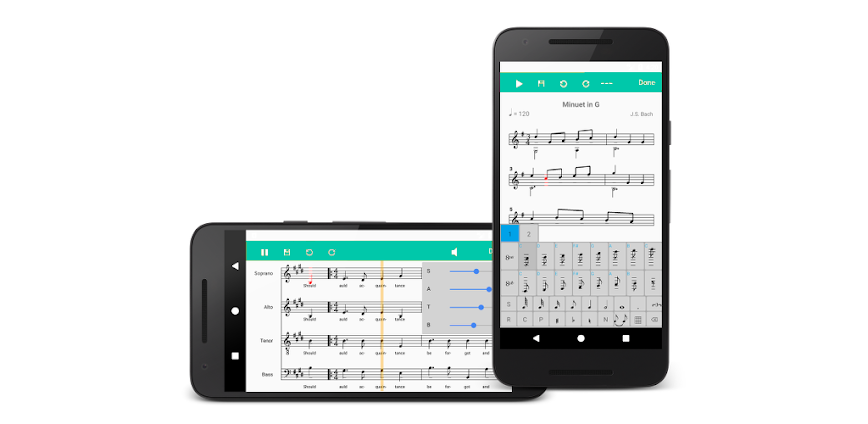Audio Converter (MP3 AAC OPUS) Mod Apk v.18.6 (Premium Unlocked)
- App Name Audio Converter (MP3 AAC OPUS)
- Version 18.6
- Sizes 40M
- Requirements Android 6.0
- Developer Bdroid Team
- Genre Music & Audio
- Updated Nov 06, 2025
- Platform GooglePlay
In an increasingly digital world, where content consumption and creation are at an all-time high, the seamless management of digital media has become paramount. Audio files, in particular, often present a unique set of challenges. From varying file formats dictated by different transmission protocols and device compatibilities to the need for specific quality levels, users frequently encounter hurdles when trying to extract the full potential from their downloaded sound recordings. This complexity can be frustrating, leading to an inability to play content on preferred devices or share it across diverse platforms. Fortunately, advancements in software development have led to the proliferation of powerful applications designed to simplify these intricate processes. Tools like advanced audio converters and editors have emerged as indispensable utilities, empowering users to effortlessly transform, optimize, and personalize their audio experiences, thereby unlocking the true versatility of digital sound. This evolution in audio manipulation technology is not just about convenience; it’s about democratizing content creation and ensuring accessibility in a rapidly evolving digital ecosystem.
Mastering Audio Format Flexibility: The Core of Digital Sound Management
The digital age has introduced an unprecedented array of audio formats, each with its own characteristics, advantages, and specific use cases. Navigating this complex landscape can be daunting, but modern audio conversion tools offer an elegant solution by providing extensive format flexibility. These sophisticated applications are engineered to process virtually all prevalent audio file formats encountered across the internet, ensuring that users are never restricted by compatibility issues. Whether you’ve downloaded a high-fidelity track, recorded a voice note, or extracted audio from a video, the ability to convert these files seamlessly means your content remains accessible and usable across any device or platform. This adaptability is crucial for anyone looking to maintain a versatile digital media library or for content creators needing to upload their work to diverse online repositories without concerns over format conflicts. The rise of streaming platforms, podcasts, and user-generated content has only amplified the demand for such flexible tools, making them essential for both casual listeners and professional producers.
- Extensive Format Assortment: At the heart of any robust audio converter lies its comprehensive support for a wide array of audio formats. This application empowers users to effortlessly convert audio files between numerous popular and niche formats. Users are typically presented with a broad selection, allowing them to choose the optimal output format for their specific needs. Options often include universally compatible formats like MP3, renowned for its balance of quality and file size, and AAC (Advanced Audio Coding), frequently used in Apple ecosystems and offering superior compression efficiency. Other choices might include M4A, a versatile format for various devices; OGG, an open-source alternative known for its streaming capabilities; and AMR, commonly used for speech recordings in mobile communications. The ability to select the desired format ensures that the converted audio file is perfectly tailored for its intended destination, whether it’s for playback on a specific device, integration into a video project, or sharing on a particular social media platform. This extensive support eliminates the frustration of incompatible files and vastly expands the utility of digital audio collections.
- Precision Quality Control During Conversion: A critical aspect of effective audio conversion is the preservation and, in some cases, enhancement of sound quality. Modern converters are not merely about changing file extensions; they provide an intricate level of control over the output audio’s characteristics. During the conversion process, users can often monitor and adjust various parameters to ensure the highest possible fidelity. This includes setting the bitrate, sample rate, and even the codec used for compression. The application typically allows users to preview the quality settings before initiating the conversion, ensuring that the final output meets their expectations. This granular control is particularly vital for audiophiles, musicians, and content creators who cannot compromise on sound integrity. By offering a suite of tools for quality optimization, these applications transform raw audio data into polished, professional-grade sound, ready for any application. Furthermore, the ability to upgrade quality levels can breathe new life into older or lower-quality recordings, making them suitable for contemporary listening standards.
- Seamless Video-to-Audio Extraction: Beyond converting between audio formats, a highly valued feature of comprehensive audio tools is their capacity for video-to-audio extraction. This functionality allows users to effortlessly isolate and extract the audio track from video files, opening up a plethora of creative and practical possibilities. Imagine a captivating speech embedded within a documentary, a memorable song from a concert recording, or a sound effect from a tutorial – all can be precisely extracted as standalone audio files. Users simply import the video containing the desired audio, and the application’s intelligent processing engine quickly renders the audio track, ready for further editing or immediate use. This feature is particularly beneficial for podcasters who might repurpose video interviews, for students creating study notes from lecture recordings, or for anyone wishing to create custom ringtones or sound samples. It significantly expands the utility of existing media libraries, transforming visual content into portable, auditory experiences. Learn more about how these capabilities can enhance your digital media workflow by exploring our insights on essential media tools for content creators.
Advanced Audio Enhancement and Personalization for Every Creator
In today’s dynamic digital landscape, merely converting audio formats is often just the first step. The increasing demand for personalized content, professional-grade sound for podcasts, videos, and music, and the need for clarity in recordings have propelled advanced audio editing capabilities into the mainstream. These applications go beyond simple format changes, offering a suite of intuitive yet powerful tools that cater to users ranging from complete novices to semi-professional sound engineers. The goal is to empower individuals to refine, enhance, and tailor their audio files to perfection, ensuring that every sound clip, voiceover, or musical piece stands out. The ease of access to such sophisticated features has democratized audio production, allowing more people to engage with and master the subtleties of sound, transforming raw recordings into polished, engaging auditory experiences suitable for any platform.
- Precise Trim & Clip Functionality: One of the most fundamental yet indispensable features in any audio editing suite is the ability to precisely trim and clip audio segments. These tools are crucial for refining recordings, removing unwanted portions, and ensuring that only the most relevant and impactful sounds remain. Users can easily cut out dead air from voice recordings, eliminate distracting background noise, crop out false starts in podcasts, or shorten musical tracks to fit specific timeframes, such as intros or outros for videos. The application provides intuitive interfaces, often with visual waveforms, allowing for pinpoint accuracy when selecting the start and end points of a segment. This meticulous control helps to create a seamless listening experience, preventing user attention from being diverted by extraneous content. For content creators, this means producing tighter, more professional audio that directly conveys its message without unnecessary filler. To discover other applications that streamline digital tasks, you might find our guide on top productivity apps for Android particularly useful.
- Comprehensive Metadata Inclusion and Management: While often overlooked, the effective management of metadata is vital for organizing, identifying, and distributing audio files professionally. Metadata encompasses crucial information about an audio clip, such as the title, artist, album, genre, year, and even album art. This application allows users to customize the sound frequency according to specific levels and embed comprehensive metadata directly into their audio files. After the audio clip has undergone analysis and processing, this feature facilitates simpler quality handling and ensures that all relevant information is stored securely within the file. Accurate metadata not only makes files easier to sort and locate within a large collection but also plays a critical role in how content is discovered on streaming platforms and recognized by media players. Properly tagged audio projects enhance searchability, improve user experience, and lend a professional sheen to any shared content. Once all editing steps are complete, users can save their project with all embedded metadata, ready for sharing and widespread distribution.
- Dynamic Boost & Speed Adjustments: Beyond basic trimming and metadata management, advanced audio editing applications offer dynamic tools for enhancing the characteristics of sound. The ability to adjust audio speed and amplify volume levels opens up a realm of creative and practical possibilities. Users can speed up audio clips for quick consumption, which is particularly useful for reviewing long lectures or interviews, or slow them down for detailed analysis of specific sounds. The boost function allows for the amplification of sound clips, making quiet recordings more audible, or adding dramatic emphasis to certain segments. This can be invaluable for voiceovers in videos, ensuring the narration stands out against background music, or for making podcasts more engaging. The application often provides the flexibility to alter other aspects of the audio, allowing for fine-tuned control over the overall sound profile. Information such as the track title and other pertinent details related to the audio clip are often stored on a digital ‘music card’ or within the file’s properties, making it easy to track and manage modified content. Explore more advanced features for personalizing your digital experience by checking out our articles on essential customization apps for mobile.
The Evolving Role of Audio Tools in the Creator Economy and Accessibility
The rise of the creator economy has fundamentally reshaped how digital content is produced and consumed, placing powerful tools like audio converters and editors at the forefront of this transformation. What were once niche applications for professional sound engineers are now indispensable assets for a broader audience, including podcasters, YouTubers, online educators, and even casual users looking to personalize their digital experience. These tools have democratized audio production, enabling individuals with minimal technical expertise to craft high-quality soundscapes that compete with more traditionally produced media. The ability to effortlessly convert formats means creators can distribute their content across every imaginable platform, from Spotify to TikTok, without worrying about technical specifications. Meanwhile, advanced editing features empower them to sculpt narratives, enhance clarity, and add a professional polish that captivates audiences. This shift has not only spurred innovation in app development but has also lowered the barrier to entry for aspiring content creators worldwide.
Furthermore, the impact of these audio tools extends significantly into the realm of accessibility. For individuals with hearing impairments, the ability to boost audio levels in recordings can make previously inaudible content comprehensible. Similarly, the speed adjustment feature can assist those who process auditory information at different rates, allowing them to slow down complex lectures or speed up conversational podcasts. Educators can leverage these tools to prepare accessible learning materials, and organizations can ensure their public communications reach a wider, more diverse audience. As digital content becomes an integral part of daily life, the assistive capabilities of audio editing software become increasingly vital, fostering a more inclusive digital environment. The development of AI-powered features is further enhancing these capabilities, automating complex tasks like noise reduction and voice enhancement, making high-quality, accessible audio production more efficient than ever before.
The intersection of ease of use, extensive functionality, and affordability has made these applications a cornerstone of modern digital media management. They bridge the gap between complex audio engineering and everyday user needs, fostering an environment where creativity is limited only by imagination, not by technical hurdles. As digital consumption continues its upward trajectory, the sophistication and integration of these audio tools will undoubtedly grow, promising an even more seamless and personalized auditory future.
Conclusion: Unlocking the Full Potential of Digital Audio
In an era dominated by digital content, the significance of robust audio conversion and editing tools cannot be overstated. From the fundamental challenge of ensuring cross-device compatibility to the nuanced art of crafting perfect soundscapes, applications designed for audio manipulation have become essential utilities for a global audience. We’ve explored how comprehensive format flexibility liberates users from compatibility constraints, allowing seamless playback and sharing across diverse platforms. The capacity for precise quality control during conversion ensures that digital audio retains its fidelity or is even enhanced, meeting the exacting standards of both casual listeners and professional producers. Furthermore, the invaluable feature of video-to-audio extraction unlocks new avenues for repurposing content, transforming visual media into versatile auditory assets.
Beyond conversion, the power of advanced audio editing empowers users to transform raw recordings into polished productions. Features like precise trimming and clipping allow for meticulous refinement, eliminating distractions and honing focus. The ability to embed comprehensive metadata is crucial for organization, discoverability, and presenting content professionally in a crowded digital space. Dynamic adjustments to boost and speed offer both creative control and practical benefits, from dramatic emphasis to improved accessibility. These integrated capabilities collectively democratize audio production, enabling individuals at all skill levels to engage with and master the subtleties of sound, fostering a thriving creator economy and promoting greater digital inclusivity.
Looking ahead, the trajectory of audio technology points towards even greater integration with artificial intelligence, cloud-based workflows, and increasingly intuitive mobile solutions. These advancements promise to further simplify complex tasks, making professional-grade audio production more accessible and efficient for everyone. For creators, this means more time focusing on content and less on technical challenges. For consumers, it translates into a richer, more personalized listening experience. As digital audio continues to evolve, embracing and mastering these essential tools will remain key to unlocking the full potential of sound in our connected world. We recommend exploring the capabilities of such versatile audio solutions to enhance your personal and professional digital media endeavors, ensuring your sound always resonates with clarity and impact.
Whats News
* Fix some issues- Votes: 1
- Comments: 3
Download Audio Converter (MP3 AAC OPUS) for Android for free.
Premium Unlocked





While the need for audio management is true, I think the challenges are often overstated. Most modern devices and software handle a wide range of audio formats without needing constant conversion.
I disagree that audio file management is *that* challenging for the average user anymore. Most devices and platforms handle common formats like MP3 pretty seamlessly these days.
While I agree that format compatibility can be a pain, I think the article overstates the challenges. Most modern devices and software handle a wide range of audio formats pretty seamlessly these days.